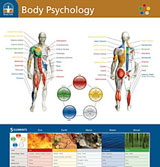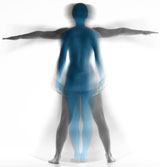Why Do I Teach BodyTalk?
Printed from http://www.bodytalksystem.com//Learn/news/article.cfm?id=1202 on Jul 03, 2025.
Oct 22, 2024
By Katharina Hirsch
BodyTalk is presented as a healthcare system, and it is. The thing is, I do not teach it so I can bring a healthcare system into this world. Or to be more precise, that is a secondary reason. The reason I teach the system and have for over 20 years is that I see it as a way to come home to Self, and I want that process to be as widespread in the world as possible. There are many ways to focus on that journey and for me BodyTalk is one of those pathways. Let me explain.
My background is in mental health, therapeutic training with Arthur Janov at the Primal Institute in Los Angeles, 20 years of work in the film industry as a make-up artist and energy worker, and practicing and teaching Qigong and BodyTalk. I write poetry, books, and songs, and I perform. I see myself more as an artist and teacher than as a healthcare professional. I thrive when I'm immersed in a creative process--the final product is never as important to me. That creative process also extends to others. I love being part of someone's journey toward awareness, as my life revolves around living from my authentic self as much as possible. The fact that awareness leads to better physical health is great, but for me it's incidental.
When I met John Veltheim, originator of BodyTalk, in 1999 and took one of his first classes in Sarasota I felt a form of recognition. I thought, "Finally, here is someone who puts this transformational wisdom into a system that is tangible and can be used by everyone." Genius. Thank you, John and Esther. At that time, it was a completely new approach to healthcare.
The system touches the inner journey and its physical manifestations. Working with BodyTalk is like Christmas for me--I unveil presents, never knowing what's inside those packages or parcels. In my Seattle office, I did 10 to 13 sessions a day for seven years. It was like getting paid to meditate. What a wonderful job.
I see BodyTalk as a system of surrender. As BodyTalk practitioners, we listen and receive, we don't "do" or act. Through this listening, dynamics are unveiled that are relevant to both the client's and our own process. It doesn't matter whether you listen with your ears, eyes, or hands. One of the perks of working with the BodyTalk System, as it's taught, is that your subtle senses become schooled and fine-tuned. Another perk is that it's not just the client who receives a "treatment"--we are not separate from each other. Every time we sit with someone, we benefit as well. However, this also means that as practitioners, our own traumas, expectations, and habits can be revealed. Many new practitioners report an upheaval in their lives for a while, which is normal. Everything must come to light. When something isn't conscious, it has to show itself in the world, in other words, in the life of those practitioners.
In the Chinese system of Qigong, we work with the image of man being the conduit between heaven and earth. When a conduit is free of blockages in body, emotion or mind, energy can flow easily throughout the whole. In Buddhism we talk about attachments, same idea.
In my experience, the most effective thing you can bring to the table as a BodyTalk practitioner is the ability to be neutral. The more we can simply be present, with the intent to be there, the more that can be revealed in the session. The session depends on both the willingness and receptivity of the recipient, as well as the openness and presence of the practitioner. For example, if you, as the practitioner, are fearful of emotions or uncomfortable with anger or helplessness, that part of the process can't be revealed, and the Active Memory technique may never arise in a session. There's simply no room for it to emerge. So, if you want to be successful and increase your effectiveness as a practitioner, you must look at your own beliefs and expectations. It's a lifelong journey, but in the end, it will help you live a more authentic life, which generally leads to better physical health.
When we practice BodyTalk we think that we are doing something for someone else, but we are actually "being done." Practices like BreakThrough, Radical Honesty, Primal Therapy, and meditation, just to name a few, can also be a support in that journey.
It is, of course, important to know the BodyTalk Protocol chart and the Procedure chart by heart. That is left-brain learning, and as far as I am concerned that's the easy part. The other part, learning to receive and surrender with all the aspects I mentioned, takes time and comes through practice.
So, if I were to give one piece of advice, it would be:
Don't look too much to the outcome of a session. Be in the process and don't concern yourself with where you are going. You don't have to understand what is going on. You set the intention in the beginning, ground yourself and let go. Do this, and a wonderful form of communication--or you can call it a dance that is rooted in being-ness rather than doing-ness--will emerge and the words "each other" have no meaning in that space.
With kindness,
Katharina Hirsch
Katharina has published several books and a CD in which those interested in BodyTalk and self-awareness may find inspiration.
Books:
CD:
Amused (14 songs, 45 minutes)
(all books and CDs available on Amazon)








